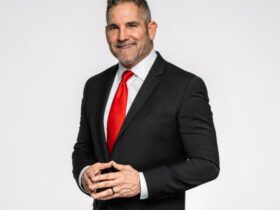No products in the cart.
Investment Alternatives

Asset allocation “strategies” have traditionally been limited to determining what percentage of a portfolio should be invested in stocks vs. bonds. Bond yields around the globe are at historical lows. Rates are eventually heading higher, which will lead to interest rate risk for bond holders’ principal.
Domestic equities are arguably in the later innings of an all already above average bull market in terms of length and returns. So it is therefore safe to say that “traditional” asset allocation is not what it once was. Consequently, high net worth investors are increasingly turning towards ALTERNATIVE INVESTMENTS (“alts”) as a part of their overall long term game plan. With this in mind, let’s break down the game film on alternative investment funds:
- One-third of high net worth investors are investing in alternatives and nearly two-thirds consider it a way to protect principal. They are mostly accessing alternatives through traditional, liquid and transparent means by investing in managed accounts, structured notes and products, ETF’s, MLP’s and mutual funds (1).
- While individual investors are relatively new to alternatives as part of their portfolio, large university endowments have utilized these investments for quite some time. In fact over 50% of large university endowments are invested in alternatives (2).
- Alternative investments are typically categorized in five ways: hedge funds, private equity, real estate, commodities and real estate (3). It is helpful to scrutinize these five categories among numerous others and determine whether they are ALTERNATIVE STRATEGIES or ALTERNATIVE ASSETS.
Alternative Strategies are typically event driven, relative value, global macro, or hedged funds in nature. An event driven strategy might include a fund that invests into distressed assets. A relative value strategy would be a market neutral or long short fund. Here managers commonly work with a goal in mind of buying call options to capture some upside while buying put options and derivatives to hedge the downside. A global macro strategy includes managed futures funds. These typically mean investing with a professional money manager, or a commodity trading advisor (CTA). These managers generally invest in commodity, currency or equity index futures. Equity alternatives are generally either Venture Capital or Private Placements. These distant cousins to mutual funds are typically illiquid and offer considerable risk and return.
Two of the more popular forms of alternative strategies are hedged and traditional balanced funds. Hedged funds might be hybrid securities that include structured notes or products. They are typically either a basket of securities, a stock or a bond, plus a derivative. Features of some structured notes are bonds with principal protection (if held to maturity), with upside potential tied to different derivatives or options of market indexes.
ALTERNATIVE ASSETS
Alternative assets on the other hand are typically easier to understand. They fall under categories such as infrastructure, real estate, equity or commodities. The most popular infrastructure investments of the past couple of years, demonstrating strong historical returns (4), are MLP’s or master limited partnerships. MLP’s combine the benefits of limited partnerships and the liquidity of publicly traded securities. They provide high tax advantaged yields, mostly pertaining to the use of natural resources, including petroleum and natural gas, transportation and extraction. Think of them as “toll roads” for the transportation of energy. This would include oil and natural gas pipelines.
 REIT’S or (Real Estate Investment Trusts) are among the most popular alternative real estate investments. These can be either public or privately traded and allow investors to participate in commercial real estate income without the burden of property management. REIT’s must pay out about 90% of their income and are treated as ordinary income.
REIT’S or (Real Estate Investment Trusts) are among the most popular alternative real estate investments. These can be either public or privately traded and allow investors to participate in commercial real estate income without the burden of property management. REIT’s must pay out about 90% of their income and are treated as ordinary income.
Commodity alternatives generally consist of energy, agriculture, base and precious metals. The most popular and transparent way to invest in commodities are through the numerous ETF’s (Exchange Traded Funds) in the marketplace. These investments are liquid, simple, transferable, transparent and cost efficient.
Alternative investments offer many different types of risk and return, correlation, and liquidity profiles. There are tremendous differences among alternatives. Therefore, seeking an investment advisor experienced with the various complexities inherent within them is essential in order to determine the right mix to meet the unique needs of each investor. These investments are not only here to stay, but deserve their rightful place as an ever increasing percentage of high net worth investors’ portfolios. Their complimentary nature to traditional stocks and bonds, together with their individual merits and structure, are helping high net worth investors potentially boost their risk adjusted performance, dampen volatility and better meet their unique goals and needs. So as you prepare your long term investment game plan with your financial advisor review your financial playbook carefully. If your asset allocation approach does not include alts, it might be time to review the game film, lest your portfolio lose its competitive edge.
Brian D. Holmes is the President & CEO of Signature Estate & Investment Advisors, LLC, a Registered Investment Advisory firm managing over $4.2 billion in client assets as of 6/30/2014.
- Mainstay Investments HNW Study 11/11/2013
- Common fund.org Alternatives reality 1/2014
- Blackrock Investment Insights 9/2012
- http://www.nepc.com/writable/research_articles/file/2012_09_nepc_investing_in_mlps_-_risks_and_opportunities.pdf











Leave a Reply